Papers by Francesca Da Porto

This paper presents the results of experimental tests on tall reinforced masonry walls. Systems m... more This paper presents the results of experimental tests on tall reinforced masonry walls. Systems made with vertically perforated clay units for building mainly tall, load-bearing, reinforced masonry walls for commercial and industrial purposes were studied for applications in areas characterised by low to high seismic risk. Tests aimed at obtaining basic mechanical characterisation of the construction systems, and reproducing the behaviour of single-storey reinforced masonry buildings provided with deformable roofs. For this structural configuration, a special set-up for out-of-plane cyclic tests was designed and built. In particular, this paper presents: (a) systems used for tall reinforced masonry wall construction; (b) test set-up to reproduce the behaviour under out-of-plane loads and P–Δ effects; (c) experimental results obtained. The final aim is validating the effectiveness of the proposed construction systems and achieving complete mechanical characterisation for modelling and structural assessment purposes.
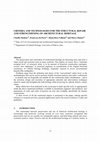
The preservation and valorisation of architectural heritage are more and more becoming a major so... more The preservation and valorisation of architectural heritage are more and more becoming a major social and economic issue in many countries. This implies of course that a “minimum accepted level” of structural safety is to be ensured to historical construction typologies: several “new challenges” to structural engineers, in consideration of the original structural consistency of Cultural Heritage buildings, frequently exposed to severe environmental hazards (like earthquake). Problems range from to the same definition and choice of the “conventional” safety level, to the methodologies that can be used to perform reliable structural analyses and safety verifications – as modern ones are frequently not suitable for the construction under consideration – and to the selection, design and execution of appropriate materials and interventions techniques aimed to repair and strengthen the built heritage while preserving its cultural, historic, artistic values. Many efforts have been dedicate...
In the framework of the DISWall research project, funded by the European Commission, innovative c... more In the framework of the DISWall research project, funded by the European Commission, innovative construction systems for reinforced masonry walls were developed. One of these systems was aimed at building tall load bearing walls for single-story constructions, such as commercial and industrial buildings. In this case, the roof often does not constitute a rigid diaphragm capable of redistributing the seismic
In recent years, appraisal of the condition and rehabilitation of existing bridges has become an ... more In recent years, appraisal of the condition and rehabilitation of existing bridges has become an ongoing problem for bridge owners and administrators in all developed countries. Reliable methodologies are therefore needed in the assessment and retrofit design phases, to identify the vulnerability of each bridge class. The specific problems of common arch bridge types are discussed herein, for both reinforced concrete and masonry structures, proper interventions for their static and seismic retrofitting are illustrated and several examples of applications are provided. Retrofitting is usually coupled with functional refurbishment, according to a methodological approach that takes into account bridge characteristics, state of maintenance and functional requirements, and environmental aspects connected with repair and strengthening systems.
Materials and Structures, 2011
This paper presents the results of experimental tests on flexural behaviour of reinforced concret... more This paper presents the results of experimental tests on flexural behaviour of reinforced concrete beams repaired by polymer-modified mortar. Tests were repeated varying repair thickness, which included or did not include the steel reinforcement. Also the position of repair mortar was varied, as it was carried out either in the tension or compression region. Finally, the reinforcement ratios of beam

Engineering Structures, 2011
On the basis of experimental and numerical results, this paper discusses the out-of-plane behavio... more On the basis of experimental and numerical results, this paper discusses the out-of-plane behaviour of tall load-bearing reinforced masonry walls in a large-displacement regime, under the influence of vertical loads (P-∆ effects). Reinforced masonry systems can be advantageous for erecting one-storey commercial and industrial buildings 6-8 m high. These structures are often provided with deformable roofs and, as a consequence, in case of seismic actions out-of-plane forces can be significant in the wall behaviour and can lead to the onset of second order effects. For this structural configuration, a special setup for outof-plane cyclic tests was designed and built, to assess experimentally two reinforced masonry systems, gather information on their structural behaviour, and calibrate moment-curvature relationships to be implemented in numerical models. These models allowed the test results to be extended to different dead loads, degrees of wall slenderness, and quantities of reinforcement. The research validated the effectiveness of such systems and identified some limitations and procedures for modelling and design.
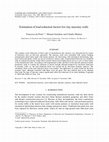
Earthquake Engineering & Structural Dynamics, 2009
The in-plane cyclic behaviour of three types of unreinforced clay masonry was characterized by me... more The in-plane cyclic behaviour of three types of unreinforced clay masonry was characterized by means of laboratory tests on full-scale specimens. The masonry walls were assembled with various bonding arrangements (head joints made with mortar pockets, dry head joints with mechanical interlocking, thinlayer mortar bed joints), which are not yet inserted in seismic codes. Experimental behaviour was modelled with an analytical hysteretic model able to predict lateral load-displacement curves in case of shear failure of the unreinforced walls. According to the experimental results and those of the selected analytical model, parametric study to evaluate the reduction in lateral strength demand produced by non-linear behaviour in masonry walls, i.e. the load reduction factor was carried out by non-linear dynamic analyses. The calculated values of the load reduction factor were modest. The differences in values found for the three masonry types, although consistent with them, were not great. This may indicate that, in the ultimate limit state, the type of masonry cannot significantly affect the behaviour of an entire building. Copyright

Bulletin of Earthquake Engineering, 2013
The earthquake sequence started on May 20th 2012 in Emilia (Italy) affected a region where masonr... more The earthquake sequence started on May 20th 2012 in Emilia (Italy) affected a region where masonry constructions represent a large part of the existing building stock and the construction of new modern masonry buildings is a common practice. The paper is focused on the performance of common architectural configurations, typical for residential or business use. The large majority of old masonry buildings is made of fired clay bricks. The seismic performance of these buildings is particularly interesting since major past earthquakes in Italy affected areas with mainly stone masonry structures. Apart from examples showing systematic or peculiar structural deficiencies governing the vulnerability of several buildings, the overall seismic performance of these structures to repeated shaking, with PGA as large as 0.25-0.3 g was rather good, despite the major part of them were only conceived for carrying vertical loads. In fact, seismic design is mandatory in the area only since 2003. Modern lowrise masonry buildings erected after this date and incorporating seismic design and proper detailing resulted in most cases practically undamaged. The examples reported in the paper allow an evaluation of the superior performance of seismically designed modern masonry buildings in comparison to older ones.
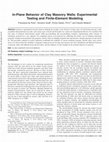
Extensive experimental research aimed at defining the in-plane cyclic behavior of three types of ... more Extensive experimental research aimed at defining the in-plane cyclic behavior of three types of load-bearing masonry walls,
assembled with perforated clay units, and various types of head and bed joints was carried out. Experimental behavior was modeled with
four types of nonlinear finite-element models. Both macromodeling and micromodeling strategies, implementing either isotropic or
orthotropic material laws, were adopted. Two simplified criteria were proposed for calibrating the models, one for defining orthotropic
properties starting from perforated unit geometry and the other for defining expanded unit and interface element properties in micromodels.
The procedures adopted for model calibration established the reliability of various modeling strategies. Results allow some conclusions
to be drawn about the reliability of diagonal compression tests for large unit masonry, the stress distribution and different behaviors
of masonry made with different head and bed joints, and the influence of unit strength on the in-plane behavior of masonry.
We carried out shear compression tests on 16 three-leaf stone masonry panels, before and after in... more We carried out shear compression tests on 16 three-leaf stone masonry panels, before and after injecting NHL grout. Non-injected panels underwent external leaf separation at lower displacement levels. Injected walls presented enhanced behaviour and increased mechanical parameters. The use of scaled specimens may be considered representative of the tested masonry.

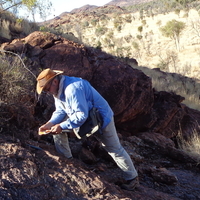





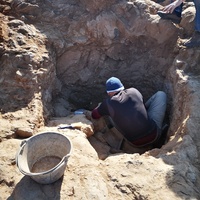



Uploads
Papers by Francesca Da Porto
assembled with perforated clay units, and various types of head and bed joints was carried out. Experimental behavior was modeled with
four types of nonlinear finite-element models. Both macromodeling and micromodeling strategies, implementing either isotropic or
orthotropic material laws, were adopted. Two simplified criteria were proposed for calibrating the models, one for defining orthotropic
properties starting from perforated unit geometry and the other for defining expanded unit and interface element properties in micromodels.
The procedures adopted for model calibration established the reliability of various modeling strategies. Results allow some conclusions
to be drawn about the reliability of diagonal compression tests for large unit masonry, the stress distribution and different behaviors
of masonry made with different head and bed joints, and the influence of unit strength on the in-plane behavior of masonry.
assembled with perforated clay units, and various types of head and bed joints was carried out. Experimental behavior was modeled with
four types of nonlinear finite-element models. Both macromodeling and micromodeling strategies, implementing either isotropic or
orthotropic material laws, were adopted. Two simplified criteria were proposed for calibrating the models, one for defining orthotropic
properties starting from perforated unit geometry and the other for defining expanded unit and interface element properties in micromodels.
The procedures adopted for model calibration established the reliability of various modeling strategies. Results allow some conclusions
to be drawn about the reliability of diagonal compression tests for large unit masonry, the stress distribution and different behaviors
of masonry made with different head and bed joints, and the influence of unit strength on the in-plane behavior of masonry.